Kim Piotrowski makes BIG art, both metaphorically and physically. Her drawings, paintings and public works clearly relay the pulse of a transitioning milieu. The ideas and palette are contemplative while disruptive, exciting while calm, and psychological while visceral, simultaneously. Simply put, Piotrowski’s visual output is complex as is the time they are being produced. This week the COMP Magazine trekked over to Piotrowski’s studio in Little Village to discuss with her her youth spent in upstate New York, how Chicago has become her home, the tactile process of her paintings, a rehash at her solo exhibition at the O’Conner Gallery at Dominican University, and her desire to create more large-scale artworks for public consumption.
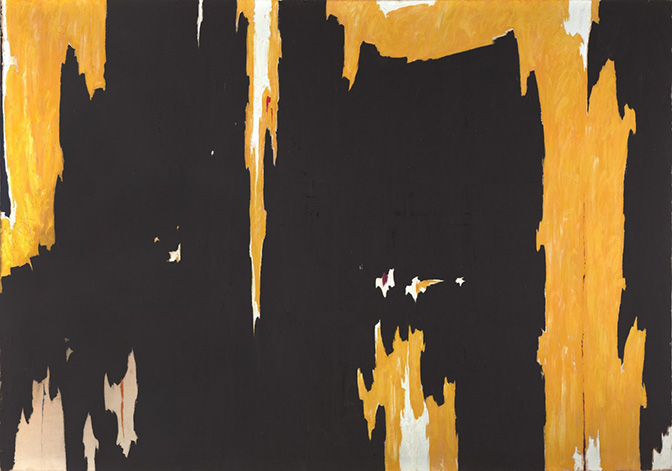
I’m rather fascinated by your story of your initial trek to the Albright Knox Art Gallery in youth. This experience appears to be a seminal moment in setting you on your way to be a painter. Can we start with you sharing that experience with us?
I must have been 14 or 15 years old when my high school art teacher gave me a flyer that offered afterschool and weekend classes at the Albright Knox Art Gallery in Buffalo NY. A nudge by a perceptive public school teacher, a city bus schedule and my own persistence put me on course to be an artist early on.
I had never been to an art museum before, and I was very excited to attend. It turns out that the Albright Knox Art Gallery has an extraordinary collection of modern and contemporary art in its holdings. Chaim Soutine’s painting, “Carcass of Beef” from 1925 astounded me. How is it possible to paint something that evokes your senses to such a degree that you believe you feel and smell the object on the canvas? I was absolutely fascinated. The abstract expressionist paintings by Joan Mitchell and Jackson Pollock revealed the power of mark making. Their use of color and gesture opened my eyes to seemingly endless worlds. But my encounter with the paintings by Clyfford Still remain my personal harbinger. I believe the first class I enrolled in was an afternoon drawing class. We viewed the collection as a group and as we entered a large gallery the cold marble floors echoed our footsteps. The monumental paintings of Clyfford Still hung on every wall of a room entirely dedicated to his work. The paintings felt massive. Bold with color and texture, the compositions were abstract yet so specific. These paintings were created with their edges in mind, with fields of color and dense surface. They were so large that I could hardly see the tops of them. The paintings appeared to be in conversation with each other. They defined my scale and allowed me to imagine. I became acutely aware of my body, my movements, the space, and everything around me. That is when I realized art could be transformative. I was observing and participating through painting. That was a powerful experience and I have been married to abstraction ever since.
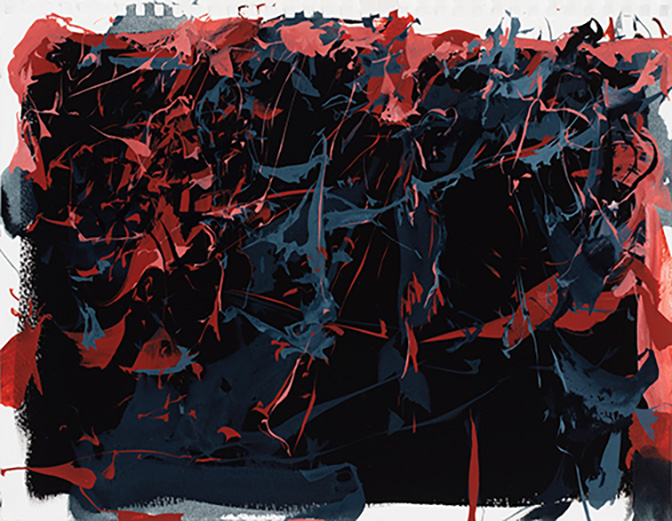
You have been making serious paintings for more than 30 years. Are there any items (ideas or practice) that have been a constant in your aesthetic practice since inception?
I believe abstraction is a reflection and validation that seeing is ever changing. It’s like looking at a glass of water. You can focus on the water, or the glass, or the reflections, or the negative space in the glass. Perhaps you then look at the table on which it rests and see all of it again but differently. The points of view are endless and unique each time they are considered. This visual exercise has always been the foundation and playground for my painting process. It is how I make sense of the world. In painting, color decisions can evoke feeling, line may suggest form, and together a new visual language is created. The process is a beautiful combination of ideas and materials that affords freedom. As an artist, I honor that.
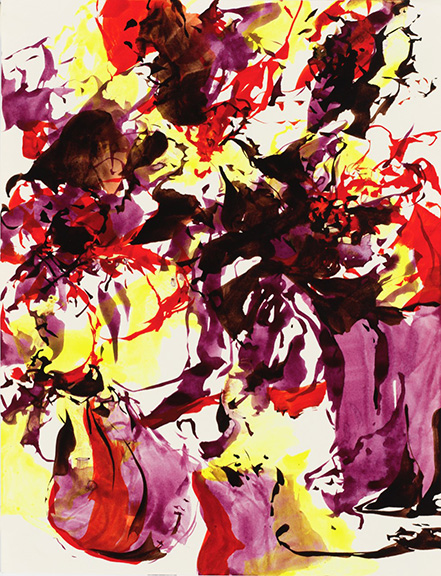
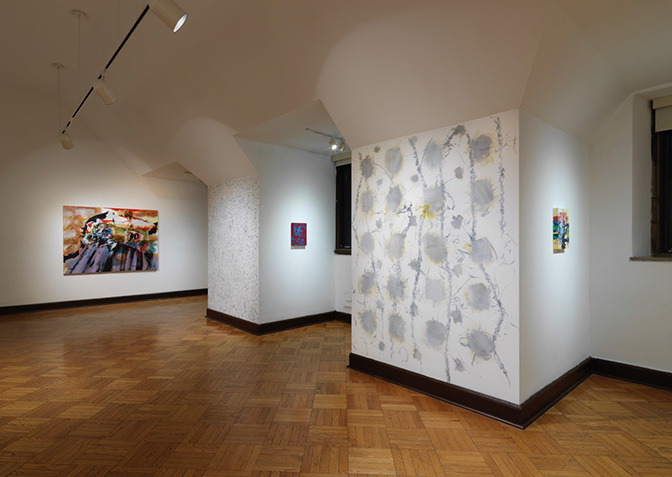
Earlier this year you presented Anxious Heaven at the O’Connor Gallery at Dominican University in River Forest. This exhibition was a direct response to recent events (the pandemic, political upheaval, social injustice). And, this was all work created in relative isolation due to the noted events. Can you share thoughts on the impact you felt as a creator at this time and how you see it affecting your practice?
Little did I know a few years ago that I would make an exhibition entitled Anxious Heaven. The show encompassed work that was made over a two-year span from 2020 – 2022. Over the last twenty years, I have produced large work for shows from a small spare bedroom. Having mastered the logistics over time, the pandemic amplified this confined space by adding isolation. My work felt even more combustible. Like many, I experienced times of confusion and fear. I worried about loved ones near and far. We shared many crises collectively, but I am concerned that we remain a society that is deeply fractured. The studio became a safe space to pause and reflect on recent events. These are heavy times. I made several small drawings in response to the death of George Floyd and tried to express the anguish of police brutality from afar. I made “Quarantine Call” drawings when I phoned my family. Each one, a snapshot of the time, day, and caller. This was my natural response. I painted these thoughts and conversations to get through. Collectively, the paintings in Anxious Heaven were a portrait of heightened experiences. Since, I have moved into a larger studio and my paintings now have room to breathe. Although it remains a very disheartening and confusing time, I think we must live forward and do better. I believe art takes the pulse of our time. That is my responsibility as a painter and in some way, sharing it helps me have hope.
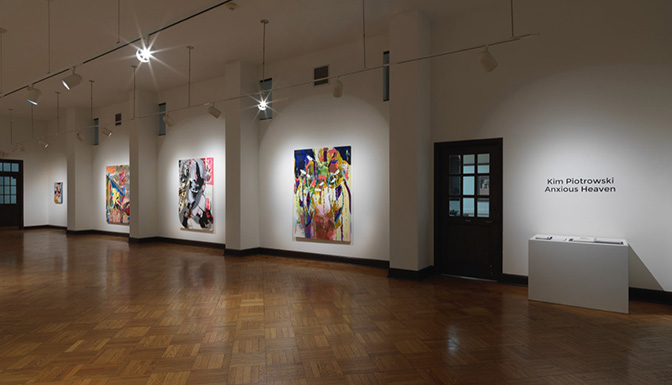
In looking at your paintings, I see a strong spatial push and pull. This appears to be achieved through an applying of pigments in translucent layers. Can you walk us through your tactile process? Perhaps, stepping back to preparatory sketches?
I have an extensive and disciplined drawing practice, using mostly acrylic ink on standard Strathmore 400 drawing paper. Sometimes my drawings are automatic. Other times there is a waning poetry to them when I am thinking about an idea. I depend on them as they hold the keys to my creative flow and offer guidance in how my paintings evolve. If you walk into my studio at any given time, you’ll see I have a lot of work in progress. Most days I draw to warm up, center and focus. Usually, a large collection of drawings hangs on the wall. I’ll revisit looking at them between painting sessions and eventually one will seem more defined or dynamic. That drawing then graduates to a painting. The next step is transcribing drawings to canvas or panel. It is a process I have done for many years, although not exclusively. Drawing from my own abstract drawings is much like drawing from real life, it is super fun. The gears shift when I jump scale and as the process unfolds, I make new decisions about color and materials. The drawing is no longer as important as the painting at hand. Now, bigger brushes, mixing more paint, drying time and brush drag all need consideration. Generally, my paintings are thinly painted. I use water-based materials such as inks, acrylics and flashe in combination. Watercolor-like washes, fine lines and opaque passages allow me to play with space, air, and light. I enjoy the challenge and wonder of creating a dynamic composition that plays with space and engages your senses, much like the Clyfford Still paintings did for me so long ago.
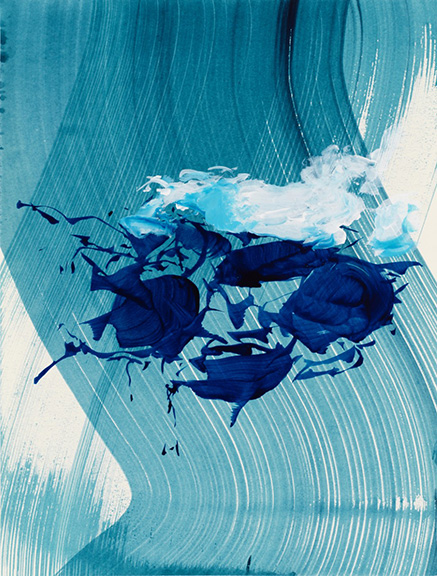
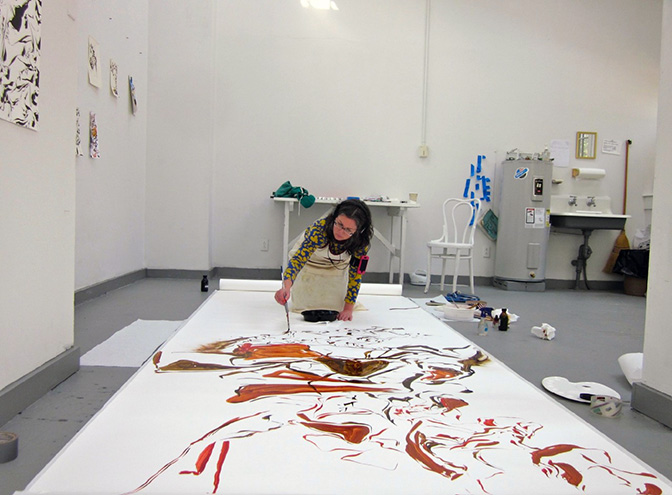
In conversation, you noted your interest in creating permanent large-scale installation in public places. I’m curious if you can discuss your approach to working in this type of environment. Do you have specific considerations that you see would guide this process?
I really love working on a large scale, especially making work that is temporary. Over the years, I’ve worked with galleries that have generously offered space to make onsite paintings as part of a solo exhibition. I am interested in the process of making them as well as the audience experience. This is distinctly different than creating a painting to hang on the wall. My initial approach is similar by transcribing drawings to a larger surface, but there is a macro/micro kind of magic that happens in the blow up. Big walls need big brushes and more paint. I use brushes up to 2 feet wide but include marks made with my tiny liner brushes as well. For me the process of working large begs for improvisation. This naturally occurs because you must adjust relative to your body and materials at that scale. Brush drag becomes critical when working on a painting larger than 5 or 6 feet. Scaffolds are nice and rags are your friends. My favorite large-scale work to date was a piece I painted for Cultivator as part of the 2019 Terrain Biennial at Bray Grove Farm entitled “Have and Hold”. I had never made an outdoor painting installation before, and the farm setting presented unique challenges. I ended up making a 5’ x 150’ long painting that I completed inside the studio and was improvised from the start. The farm site provided a long wind break where I was able to weave my painting amongst the trees. Nature provided additional elements of wind, light and shadow that were unpredictable. The piece bellowed and sparkled; it was wonderful. I would like to do more work in this manner in addition to permanent installations.
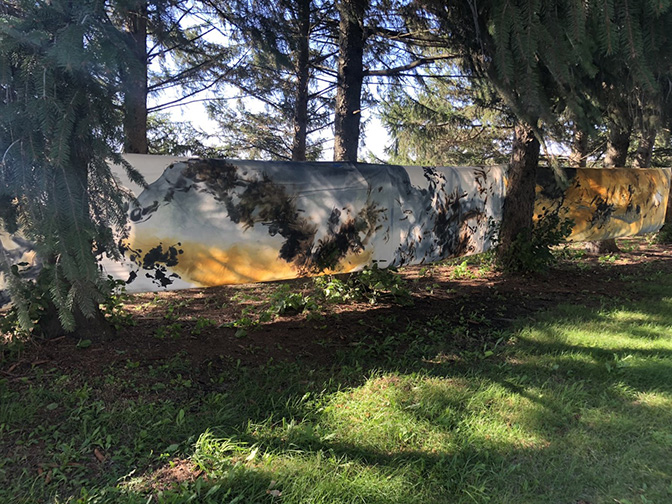
What do you value most in your studio practice?
My practice affords me very personal gifts. It is an arena to play and imagine with abandon. It is a place that quiets my mind, where I can think deeply and freely with calm. When I am painting, I also recognize changes within myself. Hopefully the peace, strength and understanding that finds me in the studio can help make me a better person and perhaps, the passion I have for painting will make me a better artist.
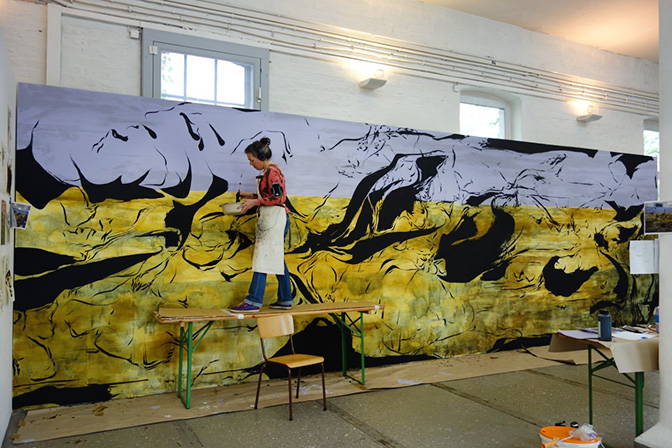
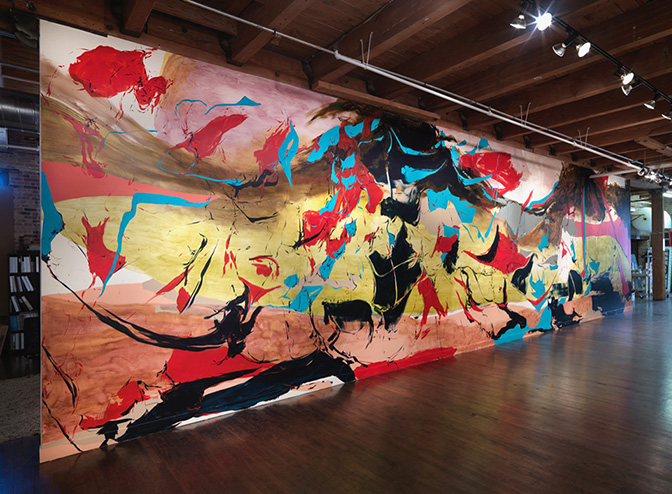
Currently, you are organising materials to be shipped abroad. In addition to this what is the plan for the remainder of 2022? Do you have any upcoming exhibitions or projects set for the new year?
I am happy to be painting in the studio the rest of this year. Plans are in the works for a solo show at Grolle:Pass Projects, in Wuppertal, Germany and Boundary in Chicago in 2023. I have a few other exciting opportunities I am exploring and always pleased to have the chance to show my work. Nothing compares to sharing something you truly love.
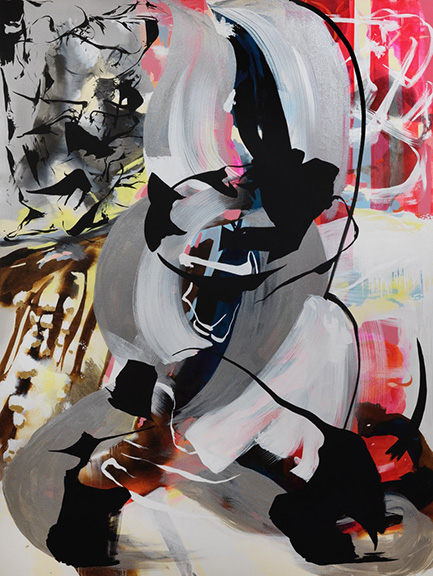
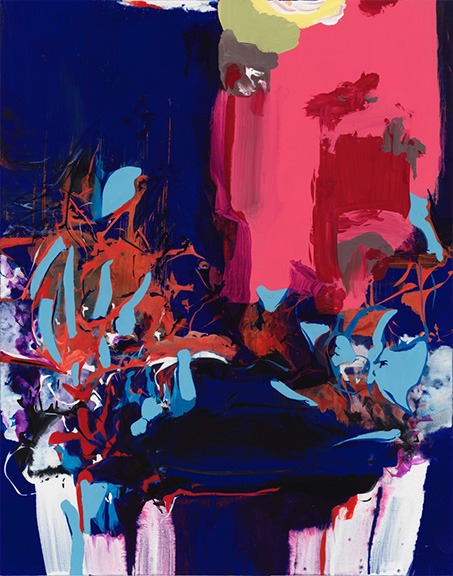
For additional information on the aesthetic practice of Kim Piotrowski, please visit:
Kim Piotrowski – http://www.kimpiotrowski.net/
Kim Piotrowski Instagram – https://www.instagram.com/kimpiotrowskiart/?hl=en
Linda Warren Projects – http://lindawarrenprojects.com/artists/kim-piotrowski/
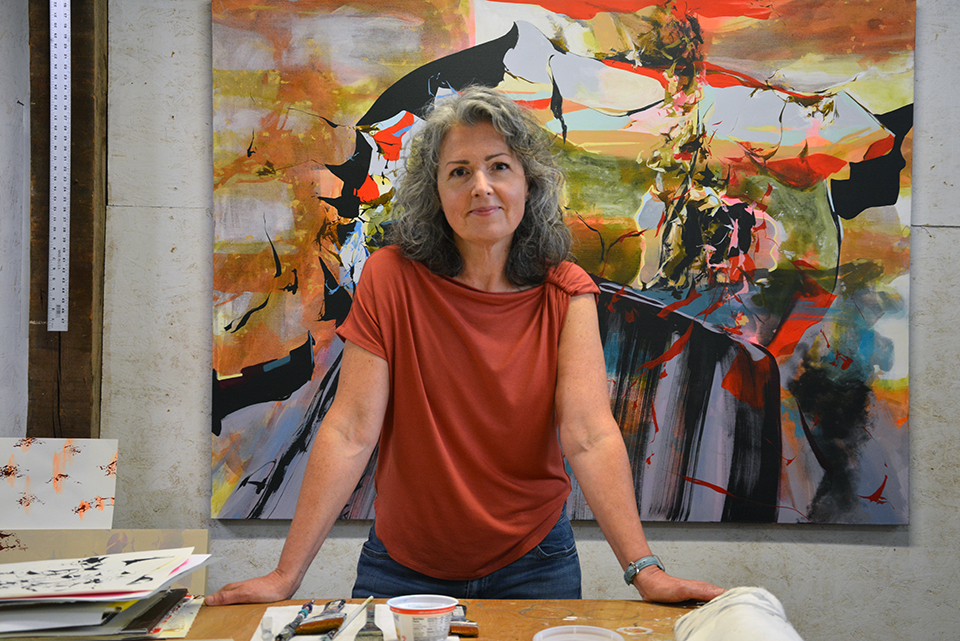
Artist interview and portrait by Chester Alamo-Costello


